Calvin Joyce
Humanoids in Hospitals: A Technical Study of Humanoid Surrogates for Dexterous Medical Interventions
Mar 17, 2025



Abstract:The increasing demand for healthcare workers, driven by aging populations and labor shortages, presents a significant challenge for hospitals. Humanoid robots have the potential to alleviate these pressures by leveraging their human-like dexterity and adaptability to assist in medical procedures. This work conducted an exploratory study on the feasibility of humanoid robots performing direct clinical tasks through teleoperation. A bimanual teleoperation system was developed for the Unitree G1 Humanoid Robot, integrating high-fidelity pose tracking, custom grasping configurations, and an impedance controller to safely and precisely manipulate medical tools. The system is evaluated in seven diverse medical procedures, including physical examinations, emergency interventions, and precision needle tasks. Our results demonstrate that humanoid robots can successfully replicate critical aspects of human medical assessments and interventions, with promising quantitative performance in ventilation and ultrasound-guided tasks. However, challenges remain, including limitations in force output for procedures requiring high strength and sensor sensitivity issues affecting clinical accuracy. This study highlights the potential and current limitations of humanoid robots in hospital settings and lays the groundwork for future research on robotic healthcare integration.
Haptic Shoulder for Rendering Biomechanically Accurate Joint Limits for Human-Robot Physical Interactions
Sep 20, 2024Abstract:Human-robot physical interaction (pHRI) is a rapidly evolving research field with significant implications for physical therapy, search and rescue, and telemedicine. However, a major challenge lies in accurately understanding human constraints and safety in human-robot physical experiments without an IRB and physical human experiments. Concerns regarding human studies include safety concerns, repeatability, and scalability of the number and diversity of participants. This paper examines whether a physical approximation can serve as a stand-in for human subjects to enhance robot autonomy for physical assistance. This paper introduces the SHULDRD (Shoulder Haptic Universal Limb Dynamic Repositioning Device), an economical and anatomically similar device designed for real-time testing and deployment of pHRI planning tasks onto robots in the real world. SHULDRD replicates human shoulder motion, providing crucial force feedback and safety data. The device's open-source CAD and software facilitate easy construction and use, ensuring broad accessibility for researchers. By providing a flexible platform able to emulate infinite human subjects, ensure repeatable trials, and provide quantitative metrics to assess the effectiveness of the robotic intervention, SHULDRD aims to improve the safety and efficacy of human-robot physical interactions.
NASU -- Novel Actuating Screw Unit: Origami-inspired Screw-based Propulsion on Mobile Ground Robots
Sep 29, 2023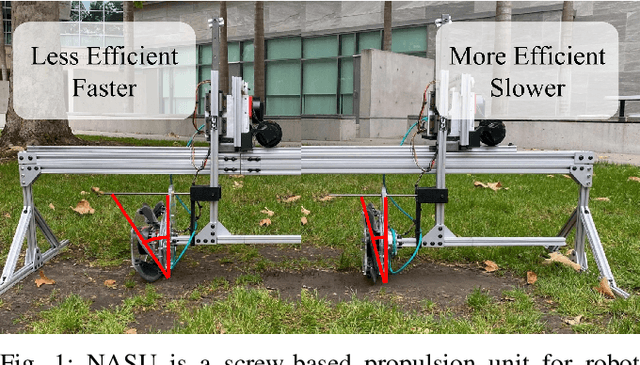
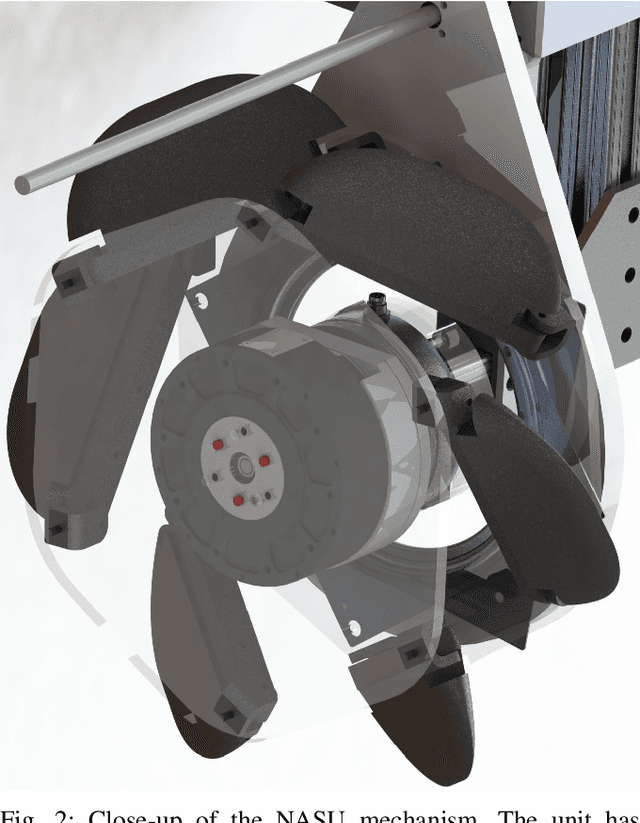
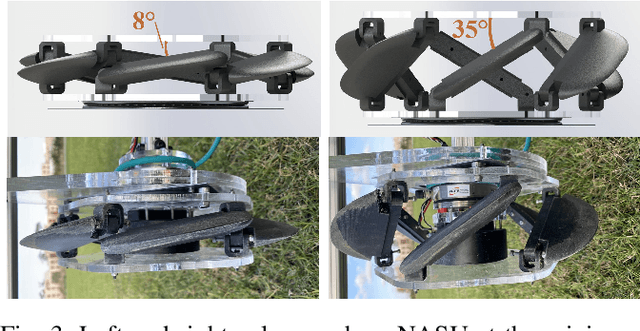
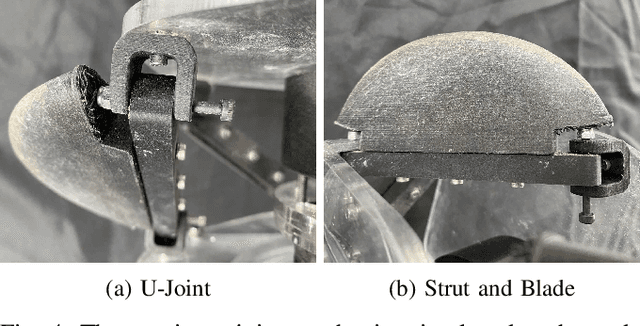
Abstract:Screw-based locomotion is a robust method of locomotion across a wide range of media including water, sand, and gravel. A challenge with screws is their significant number of impactful design parameters that affect locomotion performance in varying environments. One crucial parameter is the angle of attack, also referred to as the lead angle. The angle of attack has a significant impact on the screw's performance as it creates a trade-off between efficiency and forward velocity. This trend is consistent across various types of media. In this work, we present a Novel Actuating Screw Unit. It is the first screw-based propulsion design that enables the reconfiguration of the angle of attack dynamically for optimized locomotion across multiple media. The design is inspired by the kresling unit, which is a widespread mechanism in origami robotics, and the angle of attack is adjusted with a linear actuator, while the entire unit is spun on its axis as an archimedean screw. NASU is integrated onto a mobile test-bed and experiments are conducted in a large variety of media including gravel, grass, and sand. Our experiments show the proposed design is a promising direction for reconfigurable screws by allowing control to optimize for efficiency or velocity.
Mobility Analysis of Screw-Based Locomotion and Propulsion in Various Media
Jan 26, 2023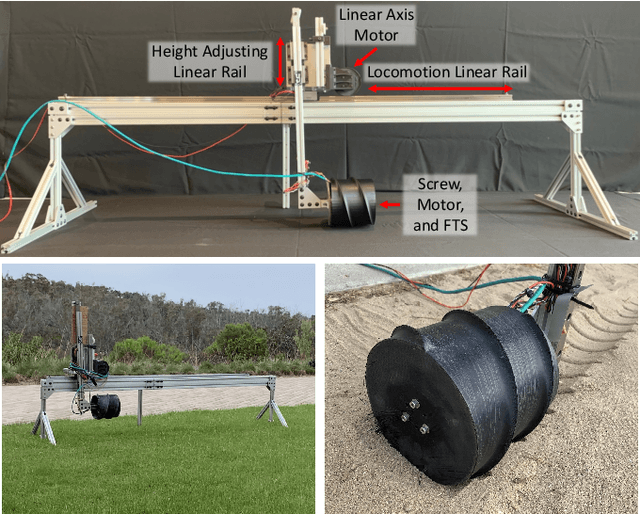
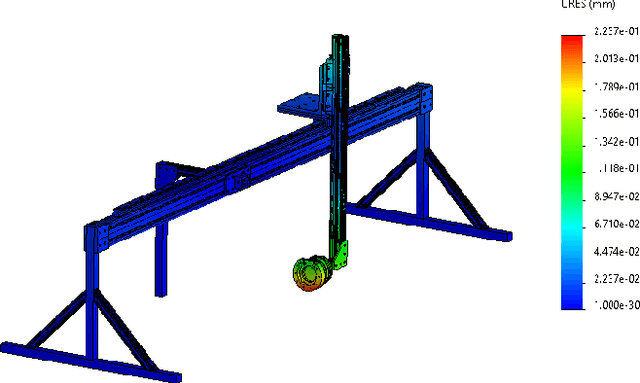

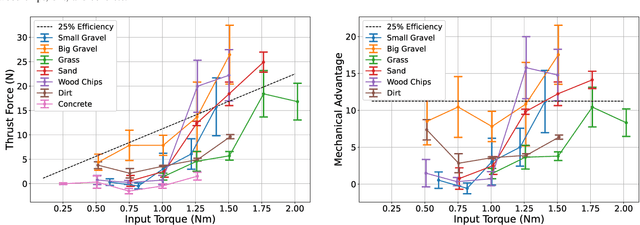
Abstract:Robots "in-the-wild" encounter and must traverse widely varying terrain, ranging from solid ground to granular materials like sand to full liquids. Numerous approaches exist, including wheeled and legged robots, each excelling in specific domains. Screw-based locomotion is a promising approach for multi-domain mobility, leveraged in exploratory robotic designs, including amphibious vehicles and snake robotics. However, unlike other forms of locomotion, there is a limited exploration of the models, parameter effects, and efficiency for multi-terrain Archimedes screw locomotion. In this work, we present work towards this missing component in understanding screw-based locomotion: comprehensive experimental results and performance analysis across different media. We designed a mobile test bed for indoor and outdoor experimentation to collect this data. Beyond quantitatively showing the multi-domain mobility of screw-based locomotion, we envision future researchers and engineers using the presented results to design effective screw-based locomotion systems.
 Add to Chrome
Add to Chrome Add to Firefox
Add to Firefox Add to Edge
Add to Edge